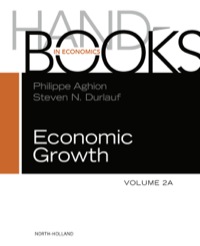Answered step by step
Verified Expert Solution
Question
1 Approved Answer
What Is Looked At in an M&A Valuation? The business valuation in mergers and acquisitions process aims to put a dollar amount on a business
What Is Looked At in an M&A Valuation?
The business valuation in mergers and acquisitions process aims to put a dollar amount on a business by accounting for several factors and aspects of its operation. Two companies within the same niche that have the same market size may differ in valuation when you consider other aspects of business operation.
M&A Valuation Models to Know
While there are several valuation methods used to determine the worth of a business, appraisers typically choose one of these three M&A valuation methods:
Cost approach: The most straightforward approach, a costbased valuation estimates what it would cost to replicate the business from scratch. This approach works best with businesses that are physical or tangible in nature. For example, you could gauge the cost of replicating an ecommerce business by summing the total of assets for the business.
Cost approaches to company valuations work less well for businesses that rely on intellectual capital. To give an example, it's difficult to objectively value an employee's talents or skills in a servicebased businesses, so these companies are less likely to be valued with a cost approach.
Market approach: A marketbased approach looks at similar business that sold recently to estimate the value of a company. This method is frequently used when there are other businesses, such as the seller's company in the same niche and geographic area. After all, a business that recently sold in another state or country does not provide useful data. This method isn't likely to be used with companies run by individuals or maverick companies in hybrid niches, since direct competitors are scarce.
Discounted cash flow approach: The discounted cash flow approach to a business valuation compares the potential future value of the business with its presentday cash flow perspective. If a business is projected to be worth a hefty sum in a given period say, five years from now an appraiser will work backward from the future valuation to determine its presentday worth. This estimate then becomes the company valuation now, even though the potential future income is hypothetical.
Understanding Which Factors Contribute to a Company Valuation in an M&A
After selecting the most relevant appraisal method, an appraiser will then look at these factors to come up with the valuation:
Assets: Adding the material worth of a company's assets and subtracting liabilities is a simple yet effective way to gauge value.
Earnings before interest, tax, depreciation & amortization EBITDA: Taking EBITDA allows buyers to compare the seller's company with competitors by taking out these four factors.
Revenue multiple: This determines the value of a business proportionate to its revenue and can be used to determine whether the seller's company is cheap or expensive to acquire.
Real option analysis: Real options are simply assetbased choices, such as machinery or business property, rather than intangible assets such as IP Enticing or valuable real options can sweeten a deal.
PE price earnings ratio: The ratio expresses a company's share price divided by aftertax profits and can help buyers and sellers compare a company to competitors.
Dividend yield: Similar to discounted cash flow, this gauge the present value of a future dividend to prove worth.
Entry cost: The entry cost sums up the cost from scratch to start an equivalent business it helps the buyer weigh the pros and cons of the M&A terms.
Precedent analysis: Comparable to the cost valuation method, this gauges the precedent price paid in similar M&A deals.
Question Marks
Evaluate the benefits that a company would gain from pursuing a merger, based on the discussion in the extract, with an example.
Step by Step Solution
There are 3 Steps involved in it
Step: 1

Get Instant Access to Expert-Tailored Solutions
See step-by-step solutions with expert insights and AI powered tools for academic success
Step: 2

Step: 3

Ace Your Homework with AI
Get the answers you need in no time with our AI-driven, step-by-step assistance
Get Started


